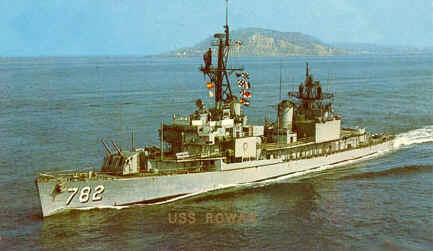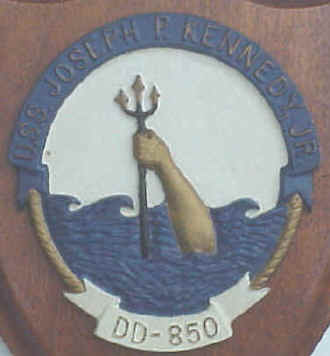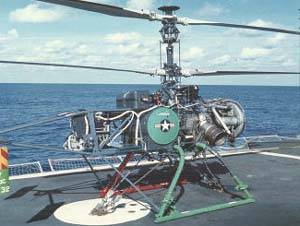
|
|
| ||||||||||||||||||||||||||||||||||||||||||||||
|
|
USS Radford (DD-446), a Fletcher class destroyer, was built by the Federal Shipbuilding Company of Kearny, New Jersey. Launched on May 3, 1942, and Commissioned on July 22, 1942, She went on to earn 12 battle stars for World War II service, five battle stars for Korean War service; and five stars for Vietnam service, and four armed forces expeditionary medals. During her 25 years at sea her Engagement Stars add up to 26. In 1963, she received the FRAM II modification which added DASH along with a variable depth sonar. Radford later steamed to WESTPAC again in 1963, 1965, and 1966. During 1967, 1968, and 1969, she operated on Yankee Station and bombarded Viet Cong targets in South Vietnam. Radford was decommissioned at San Francisco and was struck from the Navy list on July 15, 1969 and was sold on November 10, 1969 for scrap. |
|
|
|
|
USS McCaffery (DD-860/DDE-860), a Gearing class destroyer, was built by Bethlehem Steel of San Pedro. Launched on April 12, 1945 and commissioned on July 26, 1945, she displaced 3460 tons when full and had a crew complement of 336 men. In the summer of 1961, she underwent a 7 month FRAM I update in New York to carry DASH. She earned two battle stars for Korean service and on September 30, 1973 was stricken from the Naval Vessel register and sold June 11, 1974 and broken up for scrap. |
|
|
|
USS Fechteler,(DD-870), a Gearing class destroyer, was built by the Bethlehem Steel Co. of Staten Island NY, and launched September 19, 1945 with commissioning on March 2, 1946. While it is known that Fechteler was in the Far East on two war-time deployments, the first from 13 November 1950 to 8 August 1961, the second from 23 February 1952 to 29 September 1952 in which she screened TF 77 in its air operations, sailed with the escort and patrol force, and gave bombardment and close gunfire support to the troops a shore, earning 5 battle stars for that service, there is no other history of when she was FRAM'd for DASH, but that she did receive the FRAM I modification. Fechteler was eventually stricken on September 11, 1970, sold on June 28, 1972 to be broken up for scrap. |
|
|
|
|
 USS
Rowan (DD-782) was the fourth Naval vessel to bear that name. A
Gearing class destroyer, she was laid down on 25 March 1944 by Todd
Pacific Shipyards of Seattle Washington. Launched on December 29, 1944 and
commissioned on March 31, 1945, Rowan had 60,000 SHP, G.E. geared turbines
which turned her two screws for a top speed of 36.8 knots. At 20 knots,
her range was 4500 nm. |
|
|
|
|
|
|
USS
Mansfield (DD-728), was a Allen M. Sumner class destroyer laid down by
Bath Iron Works, Bath Me. August 28 1943. Launched January 29 1944 and
commissioned April 14 1944, Mansfield went on to fight in WWII and Korea
before reporting in 1960 to the Naval Shipyard, Long Beach, California for
her FRAM II overhaul which installed DASH.
For Sumner class destroyers, the overhaul was extensive: the conversion
replaced her 3 inch 50 cal. battery with Mark 25 and Mark 32 antisubmarine
torpedo batteries, and configured the after superstructure for DASH.
From October 1960 to October 1961, the "new" destroyer conducted
training exercises with the 1st Fleet off the west coast. For the
following 3 years, home ported at Yokosuka, she provided escort service
for the 7th Fleet's Fast Carrier Attack Force. |
|
|
|
|
The third naval vessel to bear the name, the USS Perkins (DD-877), a Gearing class destroyer, was laid down June 19, 1944 by the Consolidated Steel Corp. of Orange, Texas. Launched on December 7, 1944 and commissioned on April 5, 1945, the Perkins went on to serve in the Korea and Vietnam wars. In March 1962 she entered the Long Beach Naval Shipyard for Fleet Rehabilitation and Modernization (FRAM) II. Redesignated DD-877, on September 30, she emerged from the Mark II overhaul and conversion in December with a new superstructure configured for DASH. After FRAM, she deployed back to WESTPAC and the South China Sea where she provided gunfire support to American ground forces in Vietnam. Perkins was decommissioned on December 15, 1973. Stricken on January 15, 1973 and sold to Argentina that same day. She was re-named "Comodoro Py" and was finally scrapped in 1984. |
|
|
|
|
|
|
Named for a region which lies
just east of the Appalachian Mountains in Pennsylvania, Virginia and the
Carolinas, USS
Piedmont (AD-17), was a Dixie class destroyer tender which was laid
down by the Tampa Ship Building Company of Tampa, Florida on December 1,
1941, launched December 7, 1942 and commissioned on January 5, 1944.
Piedmont displaced 17,176 tons when full and could make 18.5 knots.
Piedmont was over 530 feet in length. Though lightly armed with 4 x
5"/38 DP and 4 x 2 40mm and 23 x 20mm guns, her principle role was
resupply and repair of Naval destroyers. During the month of July 1944
alone, 99 ships were provisioned with 888 tons of stores. Piedmont served
in that repair and replenishment role during the occupation of Japan, the
Korean war and the Vietnam war. "The most badly battered of the battle damaged ships serviced by PIEDMONT at Ulithi was destroyer HAZELWOOD (DD-531) which came alongside 4 May 1945. Her entire bridge superstructure was a mass of tangled wreckage, a bomb explosion had blown a 15 by 15 foot hole in her starboard side, main deck; her forward stack had been completely destroyed; extensive bomb damage extended down to her second platform, and her interior and fleet radio room had been destroyed. Numerous dead had still to be removed from the wreckage. All repairs effected were temporary and on 24 May HAZELWOOD sailed for the United States and a Navy Yard for rebuilding." Piedmont did receive a Fleet Rehabilitation and Modernization (FRAM) overhaul at Long Beach, Calif. so she could maintain the DASH system. That overhaul was completed January 31, 1963. Piedmont continued to serve as a destroyer tender for 38 years until being decommissioned and struck from the Naval register on September 30, 1982 and leased to Turkey on October 18, 1982. Turkey eventually purchased Piedmont (now named "Derya" A-576) on August 6, 1987. The Turkish Navy disposed of the ship in 1994. |
|
|
|
| USS
Orleck (DD-886) is a Gearing class destroyer that was laid down by
Consolidated Steel Corp. of Orange, Texas on November 28, 1944, launched
on May 12, 1945 and commissioned September 15, 1945. Although having
missed participating in the pacific war with Japan, Orleck worked with WESTPAC
fleets through the Korean and Vietnam wars. In May 1960, ORLECK' s rotation schedule changed and she joined DesRon 3, the first squadron to be homeported in the Western Pacific since before World War II. Based at Yokosuka for 27 months she operated primarily with fast carrier forces and served three tours with TF 72. In August 1962 she returned to the west coast for Fleet Rehabilitation and Modernization (FRAM-I). The Mark I overhaul and conversion brought on board the newest in technical equipment and weaponry, including ASROC and DASH. While having the ASW version of the QH-50C installed in 1962, it was in 1965 that ORLECK' s C aircraft were replaced with D models. In 1967 Orleck received the surveillance version of the QH-50D which operated under the ARPA/Navy program SNOOPY. SNOOPY provided for the installation of a real-time TV camera that provided the ORLECK' s Commander with real-time surveillance for gun spotting. This gun spotting mission was not without risk. When Orleck was off Vietnam on November 27, 1968, Orleck lost QH-50D, DS-1389. Around this time, Orleck was off Vietnam using its SNOOPY system to intercept Viet Cong logistic vessels in the I Corps area and to aid gunfire support south of Saigon. Orleck retained SNOOPY until 1969, with the final flight on July 20, 1969. Decommissioned on October 1, 1982 in Tacoma, Washington and stricken on August 6, 1987, Orleck was sold to the Turkish Navy on October 1, 1982 and renamed TCG YUCETEPE D 345. On August 11, 2000, Orleck returned to the port of its' manufacture, that of Orange Texas as a museum to all who served on her. While extensive restoration is needed due to bring the ship back to Navy standards of the 70's, the Gyrodyne Helicopter Historical Foundation urges all who wish to help save history by contacting the USS ORLECK' s officers (click here) and get involved with the restoration of this great legacy of the past, both Naval and DASH aviation related. Orleck received 4 battle stars for service during the Korean Conflict. |
|
|
|
|
|
USS Yellowstone (AD-27) {the large ship in the center} doing what it did best, tending to Destroyers and other vessels' resupply and repairs. |
The second ship to bear the name, USS
YELLOWSTONE (AD-27), a Shenandoah class destroyer tender, was laid
down on October 16, 1944 by the Seattle Division of the Todd-Pacific
Shipyard of Tacoma, Washington. Launched on April 12, 1946 and
commissioned on January 16, 1946, YELLOWSTONE had a length of 492' 0"
and could make 18 knots. Her crew numbered 962 men.
YELLOWSTONE performed faithful service to the Fleet for the next 28 years, providing repair, supply, and auxiliary services (power and fresh water, etc.) not only to destroyers (the purpose for which she was designed) but also to aircraft carriers and submarines. In time, this valuable adjunct to the fleet earned a reputation for reliability and dependability that caused some to nickname her "Old Faithful", after the famous geyser in Yellowstone National Park. The destroyer tender also earned the coveted battle efficiency "E" award 10 times. YELLOWSTONE was deployed to the Mediterranean 11 times between 1947 and 1968. Her ports of operation ranged from Izmir, Turkey, to Naples, Italy; from Venice to Taranto, from Suda Bay, Crete, to Gibraltar. From 1962 through 1970, YELLOWSTONE acted as a "at sea" training facility for Naval technicians charged with maintaining DASH on destroyers. YELLOWSTONE also maintained 3 QH-50C/D aircraft on board to replace losses on destroyers. After 28 years of continuous service to the Fleet (the last few years of which were spent along the eastern seaboard of the United States) YELLOWSTONE was decommissioned on 11 September 1974. Struck from the Navy list the next day and subsequently transferred to the Maritime Administration for disposal, the veteran auxiliary was sold in September 1976. |
|
|
|
 Laid down by Bethlehem Steel company of Quincy, Mass, on April 2, 1945,
launched on July 26, 1945 and commissioned December 15, 1945, the Gearing
class destroyer USS JOSEPH P.
KENNEDY, Jr.(DD-850) began its career as a Naval Reserve Training
ship, but only for the first 3 months. After that, she sailed extensively
in the Atlantic and operated on the East Coast and in the Caribbean. With
the outbreak of hostilities in Korea, USS
JOSEPH P. KENNEDY, Jr. set sail to halt communist aggression, on
January 3, 1951. Exactly 1 month after departing Norfolk, she joined Task
Force 77 to screen the Aircraft Carriers whose aircraft constantly bombed
and strafed North Korean forces.
Laid down by Bethlehem Steel company of Quincy, Mass, on April 2, 1945,
launched on July 26, 1945 and commissioned December 15, 1945, the Gearing
class destroyer USS JOSEPH P.
KENNEDY, Jr.(DD-850) began its career as a Naval Reserve Training
ship, but only for the first 3 months. After that, she sailed extensively
in the Atlantic and operated on the East Coast and in the Caribbean. With
the outbreak of hostilities in Korea, USS
JOSEPH P. KENNEDY, Jr. set sail to halt communist aggression, on
January 3, 1951. Exactly 1 month after departing Norfolk, she joined Task
Force 77 to screen the Aircraft Carriers whose aircraft constantly bombed
and strafed North Korean forces.  Her bombardment of Korea in support of
ground forces continued until June 13, 1951. Upon circumnavigating the
globe she returned to Norfolk on August 9, 1951. From that point she
served as a battle practice school ship (1953), went on a ASW training cruise
(1953-54), a Mediterranean cruise (54-55), a Naval Academy midshipmen practice
cruise and training operations ('56 and '57) followed by a cruise to
Mediterranean again in 1958. By 1960, she had returned to the
Mediterranean with Carriers Forrestal (CVA-59) and Franklin D. Roosevelt
(CVB-42) and returning to Newport 15 October 1960. In January 1961, USS
JOSEPH P. KENNEDY, Jr., steamed' to Washington for the inauguration of
John F. Kennedy, brother of her namesake. Her bombardment of Korea in support of
ground forces continued until June 13, 1951. Upon circumnavigating the
globe she returned to Norfolk on August 9, 1951. From that point she
served as a battle practice school ship (1953), went on a ASW training cruise
(1953-54), a Mediterranean cruise (54-55), a Naval Academy midshipmen practice
cruise and training operations ('56 and '57) followed by a cruise to
Mediterranean again in 1958. By 1960, she had returned to the
Mediterranean with Carriers Forrestal (CVA-59) and Franklin D. Roosevelt
(CVB-42) and returning to Newport 15 October 1960. In January 1961, USS
JOSEPH P. KENNEDY, Jr., steamed' to Washington for the inauguration of
John F. Kennedy, brother of her namesake.
|
|
|
|
|
|
|
|
|
|
Are you concerned about our U.S. Armed forces and the effects of the terrorist attacks made on our soil on September 11, 2001? If so, we urge all visitors to make a donation to the American Red Cross to help aide the victims and families of not only the attacks on Tuesday, September 11 2001, but ALSO the attack on the destroyer USS COLE (DDG-67) which was attacked by terrorists while in Aden harbor, on October 12, 2000; killing 17 of her crew. These incomprehensible and continued attacks on the United States of America must stop and we wish to express our total support to the President and the U.S. Military in whatever action is needed to punish those involved in this outrage to the civilized world. |
![]()
![]()
|
The name "Gyrodyne" in its stylized
form above, is the Trademark of and owned by the Gyrodyne Helicopter Historical
Foundation; unauthorized use is PROHIBITED by Federal Law. All Photographs, technical specifications, and
content are herein copyrighted and owned exclusively by Gyrodyne Helicopter
Historical Foundation, unless otherwise stated. All Rights Reserved
©2013. |